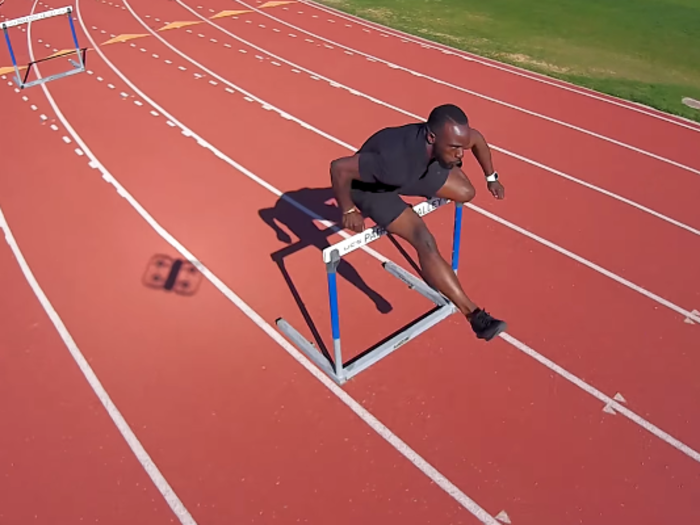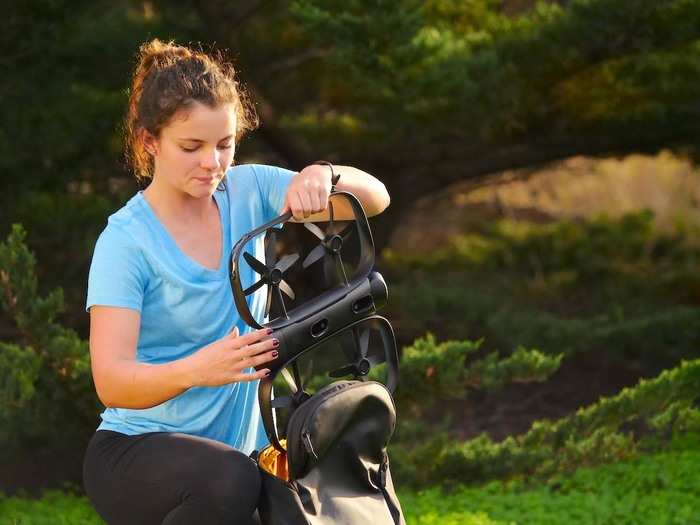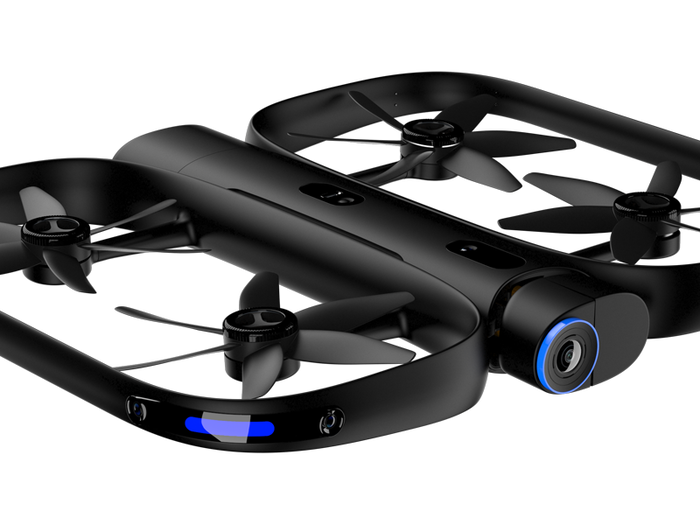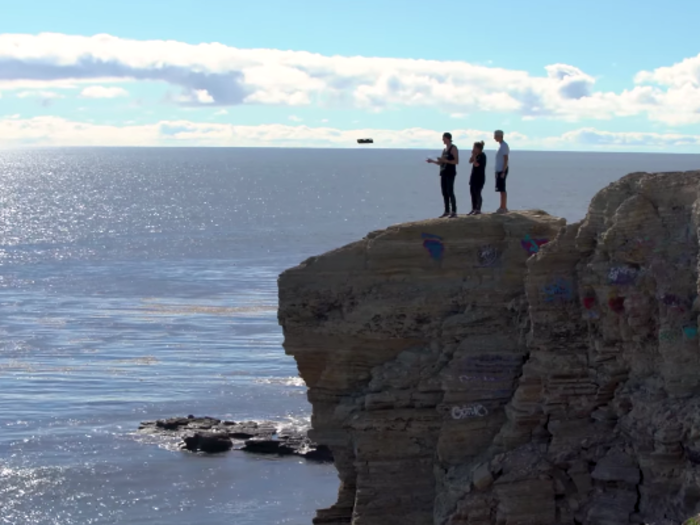This $2,500 'self-flying camera' can follow you around and snap photos without anyone controlling it - here's how it works
The four-year old startup Skydio was founded by Adam Bry and Abraham Bachrach, former MIT graduate students and Google robotics engineers.

Skydio is the first company to deliver a drone with the ability to fly itself and avoid obstacles intelligently.

The company is marketing the R1 drone as a photography tool. Users can lock the drone onto themselves or another subject and gather photo and video without having to use a remote to control it.
It's the type of footage, CEO Adam Bry told Business Insider, that otherwise could only be captured with a full-fledged professional camera crew.

As a result, Bry said, Skydio isn't targeting people who like to fly drones. He thinks the photos and videos captured by the drone — and yes, sometimes selfies, he conceded — are worth paying for.
Bry envisions the Skydio R1 as a flying camera that individual people or groups can use to record their activities.

"I've probably taken four selfies in my entire life, but I love running and I love biking, and over the past 6 months using the R1 to capture activities with my friends has been incredible," Bry said. "And those pictures and videos are fun for us and meaningful for me and I think there's something special there that people really connect with."
The Skydio R1 uses 13 cameras and an artificial intelligence 'supercomputer' to fly autonomously.

The Skydio R1 features 13 cameras dotted around its body and the Nvidia Jetson AI supercomputer on board, which lets the drone track and follow you at a seemingly decent speed, all while avoiding complex obstacles that could damage the drone.
With its cameras and supercomputer, the Skydio R1 can look ahead and plan a route through obstacles.

It would take a pretty experienced drone pilot to fly through a complex environment like this forest.

With a regular drone that has only one camera facing frontwards, a regular pilot would have a very difficult time flying the drone sideways while avoiding all those trees.
It looks incredibly easy to use.

You just place the drone on the ground and use a mobile app to launch it. Then you tap on a person for the drone to follow, and forget about it as it records your activities.
It has some good specs considering its size.

The Skydio R1 isn't that much smaller than most regular drones, but it is incredibly thin at 1.5 inches. It's also light weight at 2.2 pounds. Skydio also used resilient materials like aluminum and carbon fiber, and it can be packed into a backpack without damaging the drone.
Video-wise, the Skydio R1 can record 4K video at 30 frames per second (fps), or 1080p video up to 60 fps. With its built-in 64GB of storage, Skydio says you can record up to an hour and a half of 4K video, and up to four and a half hours at 1080p and 30 fps.
There's one obstacle Skydio can't dodge: Battery life.

Battery life is the Achilles' heel of every drone on the market. Skydio rates the battery life of a single battery at 16 minutes of flight time, which is about average for most drones its size. That's fine for a 15-minute ski run, but any activity lasting longer would need periodic battery replacements. Thankfully, Skydio includes two batteries with the drone.
The R1 comes at a hefty cost: $2,500.

That price tag makes the Skydio R1 one of the more expensive drones on the market, and that could turn away consumers, said Colin Snow, a drone industry analyst with Skylogic Research.
"This thing is expensive, that's a no-go," said Snow. "They're completely divorced from any sense of what the market will bear. Who's going to buy this? Not that many people."
Flying cameras are just the beginning for Skydio.

Although Skydio's first product is purely for photos and videos, the underlying technology, Bry said, has other potential applications, including mapping and security.
"We do think that the underlying technology could certainly be useful for more traditional commercial applications, mapping, monitoring, security," he said. "I think that in the medium and long term, that stuff is also very interesting to us, there's a lot of potential there, but that's not the focus of the first product."
You can pre-order the Skydio R1 for $2,500 over on the Skydio website.
Popular Right Now
Popular Keywords
- India’s wearables market decline
- Vivo V40 Pro vs OnePlus 12R
- Nothing Phone (2a) Plus vs OnePlus Nord 4
- Upcoming smartphones launching in August
- Nothing Phone (2a) review
- Current Location in Google
- Hide Whatsapp Messages
- Phone is hacked or not
- Whatsapp Deleted Messages
- Download photos from Whatsapp
- Instagram Messages
- How to lock facebook profile
- Android 14
- Unfollowed on Instagram
Advertisement